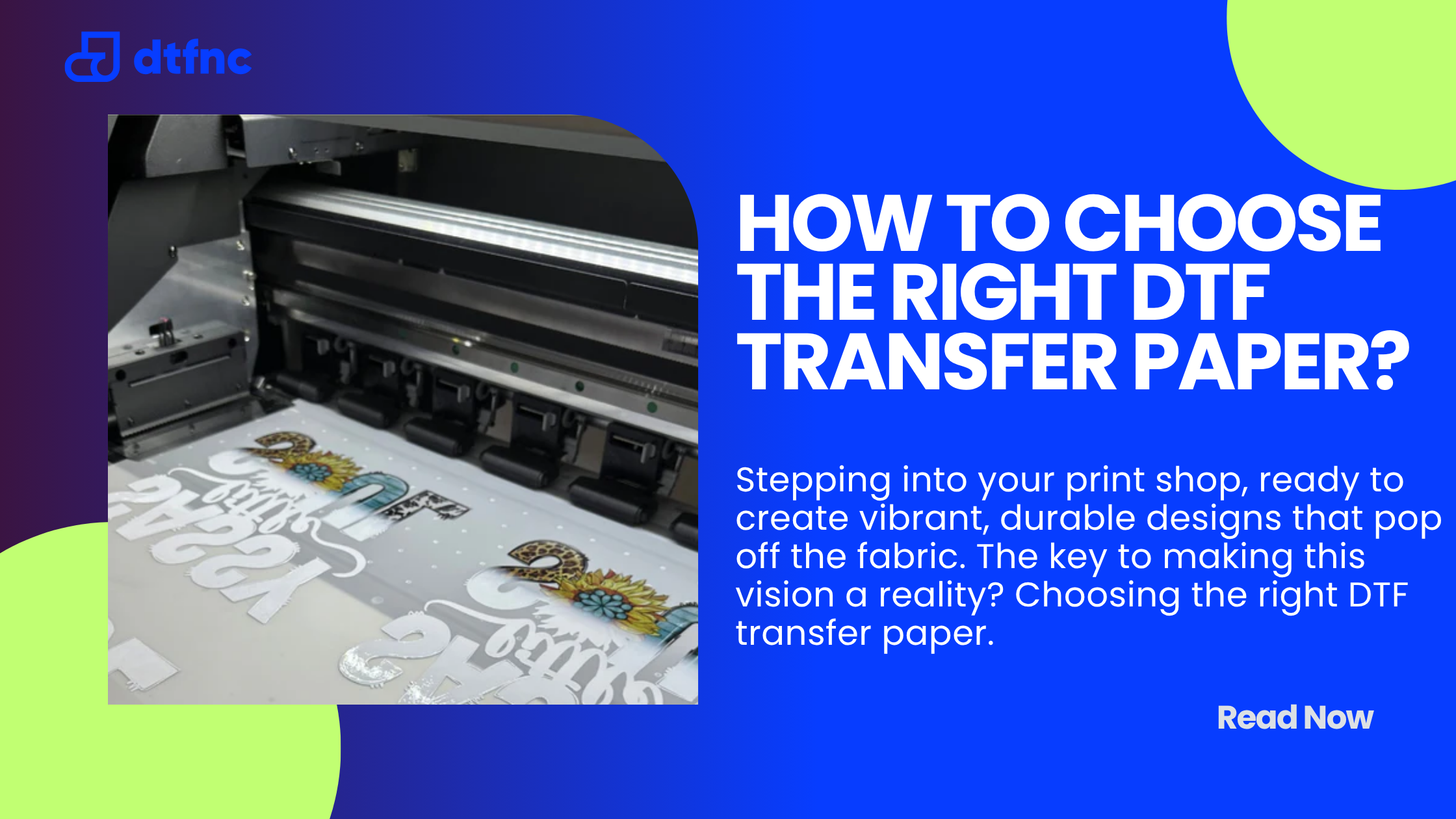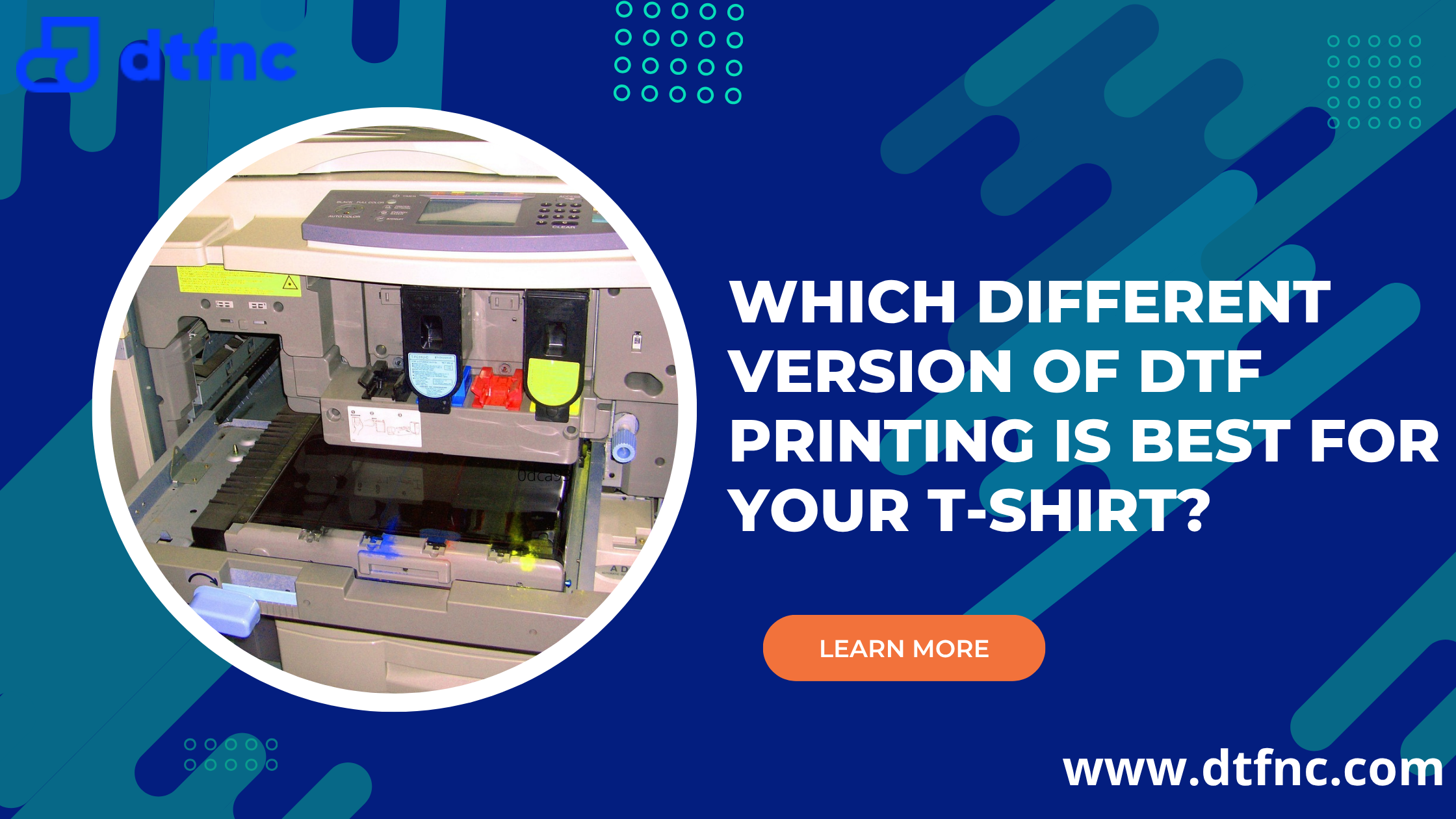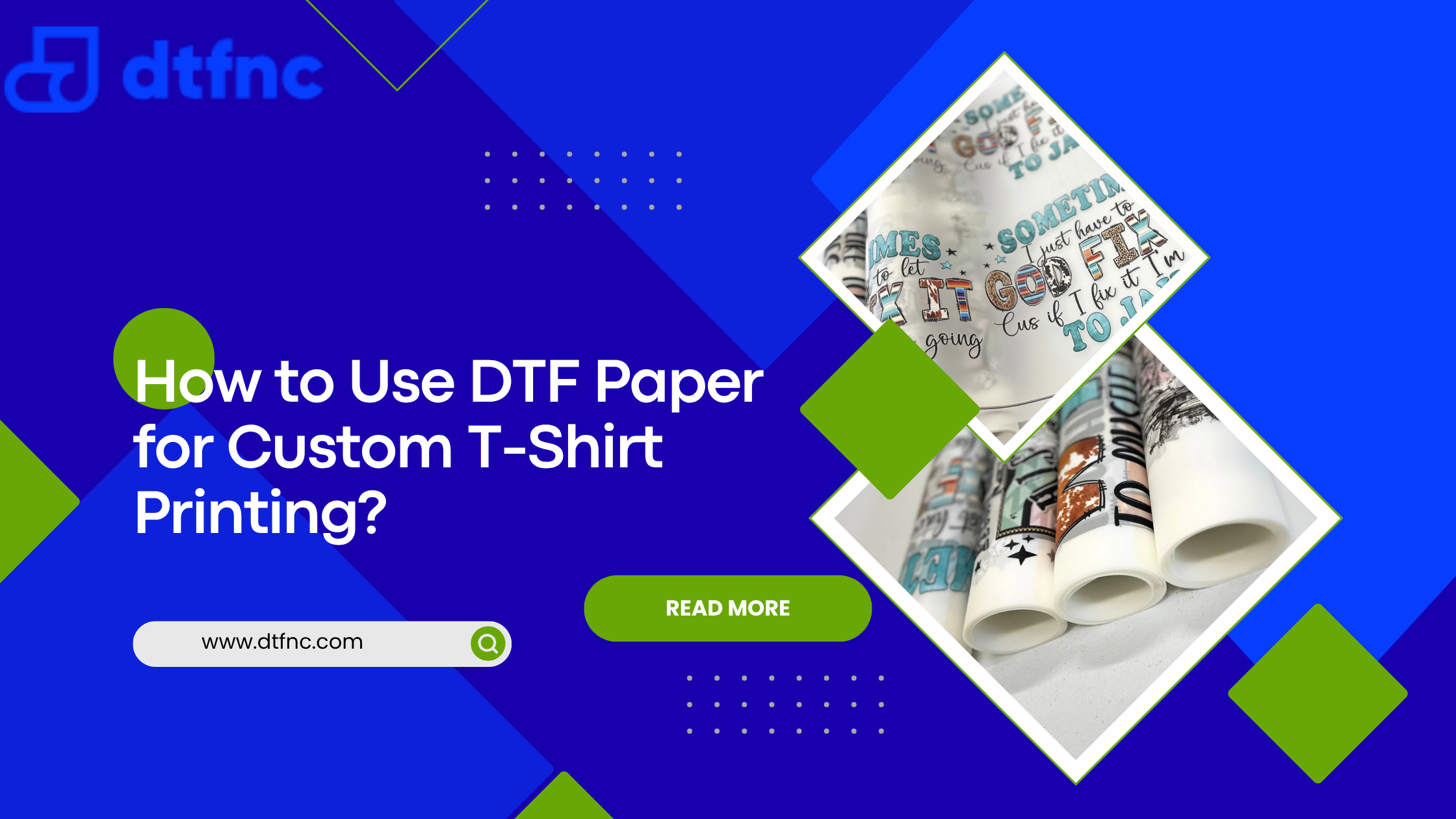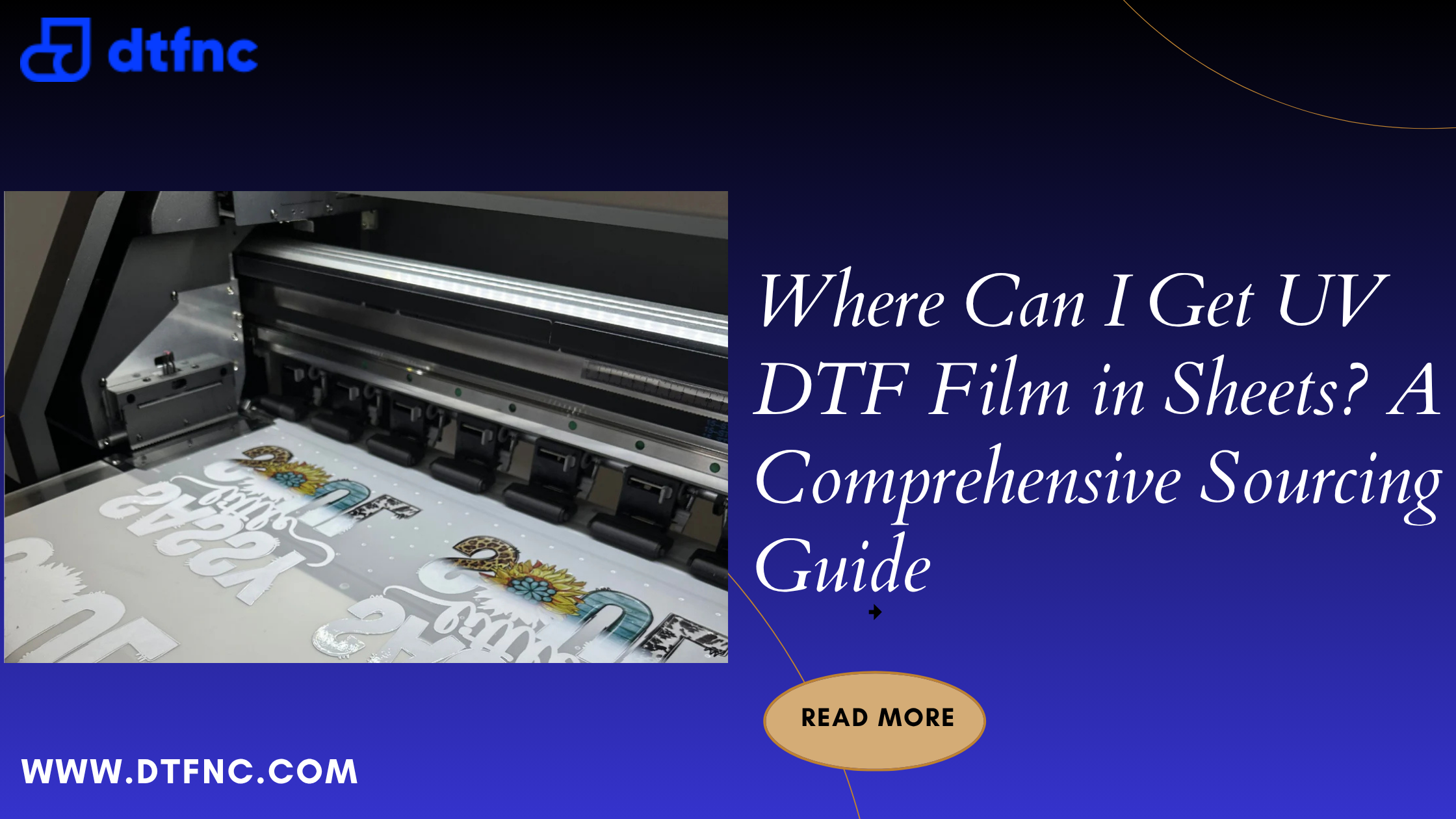Stepping into your print shop, ready to create vibrant, durable designs that pop off the fabric. The key to making this vision a reality? Choosing the right DTF transfer paper. Direct-to-Film (DTF) printing has taken the custom apparel world by storm, offering unmatched versatility and quality.
But with so many options out there, how do you pick the best DTF transfer paper for your needs? Whether you’re a seasoned printer or just starting, this guide will walk you through everything you need to know to make an informed choice, ensuring your prints are nothing short of spectacular.
Understanding DTF Transfer Paper
DTF transfer paper, also known as DTF transfer film paper, is the backbone of the DTF printing process. Unlike traditional DTF vs transfer paper debates, DTF paper is specifically designed to work with DTF transfer printers, like those from Epson, to transfer vibrant designs onto fabrics.
The paper holds the ink and adhesive powder, which, when heat-pressed, bonds the design to the material. Choosing the right paper ensures crisp prints, durability, and ease of use, whether you’re printing on cotton, polyester, or blends.
Why Choosing the Best DTF Paper Matters
The quality of your DTF transfers paper directly impacts the final product. Poor-quality paper can lead to issues like ink bleeding, poor adhesion, or faded colors after washing. On the other hand, the best DTF transfers come from using high-quality DTF transfer paper that’s compatible with your printer, such as DTF paper for Epson printer models.
A good paper ensures vibrant colors, sharp details, and long-lasting prints, making it essential for professional results.
Key Factors to Consider When Choosing DTF Transfer Paper

1. Compatibility with Your Printer
Not all DTF transfer paper is universal. If you’re using an inkjet printer, look for DTF transfer paper for inkjet printer or best DTF film for an inkjet printer. For example, the DTF paper for the Epson printer is designed to work seamlessly with Epson’s ink systems, ensuring proper ink absorption and transfer. Check your printer’s specifications and match them with the paper’s requirements to avoid clogs or subpar prints.
2. Paper Dimensions in Pixels
The size of your DTF transfer paper matters, especially when working with specific design dimensions. Paper sizes are often listed in standard measurements like A4, A3, or rolls, but for digital precision, consider paper dimensions in pixels.
For instance, an A4 sheet at 300 DPI translates to approximately 2480 x 3508 pixels. Ensure your paper size aligns with your design software and printer capabilities to avoid scaling issues or wasted material.
3. Material Compatibility
When asking, “What material is best for DTF transfers?” the answer depends on your project. DTF heat transfer paper works on a variety of fabrics, including cotton, polyester, and blends. However, some papers are optimized for specific materials.
For example, papers designed for stretchy fabrics ensure the print flexes without cracking. Check the paper’s specs to confirm it suits your target material for the best DTF transfers.
4. Coating and Finish
The coating on DTF transfer film paper affects ink adhesion and transfer quality. A good transfer paper has a smooth, consistent coating that holds ink without smudging. Matte finishes are ideal for vibrant colors, while glossy finishes offer a premium look. Choose based on your aesthetic goals.
5. Peel Type: Hot vs. Cold Peel
DTF transfers paper comes in hot-peel and cold-peel varieties. Hot-peel papers are removed immediately after pressing, saving time but requiring precision. Cold-peel papers are removed after cooling, offering more forgiveness for beginners. The best DTF transfer paper depends on your experience level and workflow speed.
6. Durability and Washability
For high-quality DTF transfers, durability is key. Look for papers that promise strong adhesion and washability. The best DTF transfer papers ensure designs withstand multiple washes without fading or cracking. Check reviews or test samples to confirm the paper’s performance over time.
7. Ease of Use
Some DTF transfer papers are easier to work with than others. Papers with consistent coatings and clear peeling instructions simplify the process. If you’re new to DTF, opt for the user-friendly best DTF paper recommended by professionals to reduce the learning curve.
Also Read: Which DTF Is Best For Beginners?
Comparing DTF vs Transfer Paper
Traditional transfer paper and DTF transfer paper serve different purposes. Traditional papers often require cutting and weeding, while DTF heat transfer paper allows for full-color designs without weeding, saving time.
DTF paper also offers better stretch and durability, making it ideal for complex designs on flexible fabrics. However, traditional papers may be cheaper for simple projects. For most modern apparel businesses, DTF transfer printing is the superior choice due to its versatility.
Finding the Best DTF Transfer Paper

The best DTF transfer paper depends on your setup and goals. Here are some top recommendations:
-
Epson-Compatible Paper: If you own an Epson DTF transfer printer, look for DTF paper for Epson printer models like the L1800 or XP-15000. These papers are optimized for Epson’s ink systems.
-
Premium Brands: Brands like DTFNC offer high-quality DTF transfers with reliable coatings and durability. Their papers are designed for both beginners and pros.
-
Budget Options: For cost-conscious buyers, generic good transfer paper brands offer decent quality for small-scale projects, though they may lack the precision of premium options.
Where to Find DTF Transfer Paper Near Me?
Searching for DTF transfer paper near me? DTFNC provide a range of DTF transfers paper, including best DTF film for inkjet printer, with fast shipping. For DTF transfer printing near me, check local printing services or invest in your own DTF transfer printer for full control.
Before committing to a large order, test small batches of DTF transfer film paper. Print a sample design, apply it to your chosen fabric, and wash it multiple times to check durability. Compare results across brands to find the best DTF transfer for your needs. Keep records of drying times, peel performance, and color vibrancy to make data-driven decisions.
Conclusion
Choosing the right DTF transfer paper is a game-changer for creating stunning, durable prints. By considering factors like printer compatibility, paper dimensions in pixels, material suitability, and coating quality, you can find the best DTF paper for your projects.
At DTFNC, we emerged from a desire to fill a gap in the printing industry. Where others saw challenges, we saw opportunities—opportunities to redefine quality, precision, and customer satisfaction in the Direct-to-Film printing world.
Visit us to explore our range of high-quality DTF transfers and find the perfect DTF transfer paper for your needs.
FAQs
1. What size DTF transfer do I need?
The size of your DTF transfer depends on your design and garment area. Common sizes include A4, A3, and gang sheets for multiple prints on one sheet.
2. What paper do you use for DTF transfers?
DTF transfers use PET film, not regular paper. It’s heat-resistant, non-absorbent, and designed to hold ink and adhesive powder for precise, vibrant transfers.
3. How to choose a DTF film?
Choose a cold or hot peel PET film based on your heat press workflow. Look for anti-static, matte-finish films that offer high ink absorption and crisp detail.
4. What is the best material for DTF transfers?
100% cotton, polyester, and blends work best with DTF. The process is versatile, adhering well to most fabrics without needing pre-treatment or special coatings.
5. Can you use DTF transfer paper in a regular printer?
No, you need a DTF-compatible printer. Regular printers lack the special ink systems and film-handling features required for accurate DTF transfer production.
6. Can you use sublimation ink on DTF transfer paper?
No, sublimation ink isn’t compatible with DTF film. DTF requires pigment-based inks that can bind with adhesive powder and transfer properly onto fabric.
Also Read More Related Blogs: Can We Use DTF Transfer with Regular Printer Ink?
Can We Use DTF Transfer with Regular Printer Ink?









11 comments
📫 ⚠️ Verification Needed: 1.3 Bitcoin deposit delayed. Unlock here > https://graph.org/ACQUIRE-DIGITAL-CURRENCY-07-23?hs=c7f2c5b9124e946fc184e7b357998ea3& 📫
pggqlw
🖱 🔔 Critical: 0.6 BTC sent to your wallet. Confirm payment > https://graph.org/SECURE-YOUR-BITCOIN-07-23?hs=c7f2c5b9124e946fc184e7b357998ea3& 🖱
dmulr5
📬 ⚠️ Important: 2.0 Bitcoin transfer canceled. Resend now > https://graph.org/RECOVER-BITCOIN-07-23?hs=c7f2c5b9124e946fc184e7b357998ea3& 📬
p6l0b2
📋 SECURITY ALERT; Unauthorized transfer of 2.0 Bitcoin. Block? >> https://graph.org/COLLECT-BTC-07-23?hs=c7f2c5b9124e946fc184e7b357998ea3& 📋
f1mty4
🗒 📬 Unread Alert: 1.65 Bitcoin from user. Claim transfer >> https://graph.org/ACTIVATE-BTC-TRANSFER-07-23?hs=c7f2c5b9124e946fc184e7b357998ea3& 🗒
zsa2u5